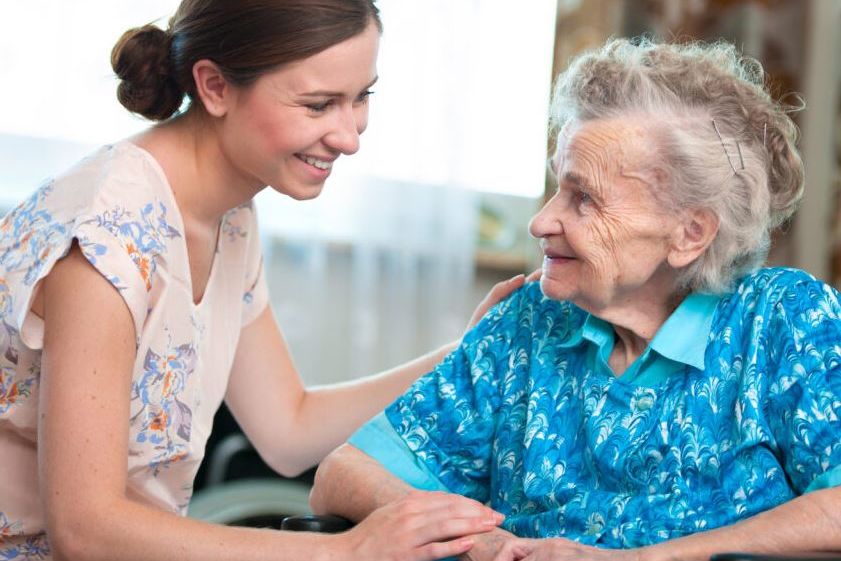Explaining Support at Home
‘No worse off’ principle means those receiving in-home aged care should be alert, not alarmed.

Join our campaign
National Seniors Australia’s Aged Care Advocacy campaign aims to build a better aged care system with an emphasis on improving access to home care.
For details of the campaign, and to join, follow this link.
With the change from Home Care Packages to Support at Home just over a month away, it’s important to remember the protections available for people already receiving in-home care.
Support at Home will bring many changes to in-home aged care on 1 November 2025, including co-contribution for many services, but this is cause to be alert, not alarmed.
Much of the media attention on co-contributions has focussed on the rates as high as 50% and 80%. However, less attention has been given to the significant protections for people already in the in-home aged care system.
Current Home Care Packages are based on a fixed daily fee irrespective of the services received. This includes a ‘basic daily fee’ of between $12.09 and $13.49 that providers could ask people to pay and an ‘income tested care fee’ – an additional fee people pay depending on their income and assets, which can be up to $38.72.
Support at Home instead involves a separate co-contribution for each service, with the rate varying depending on the type of service received, the pension or concession card status of the recipient, and means testing of the recipient’s income and assets.
Difference between clinical care, independence, and everyday living services
Under the new system, the co-contribution rates will vary depending on the type of service received, with three categories:
Clinical care: Includes nursing care, allied health, and care management.
Independence: Includes personal care, social support, and transport.
Everyday living: Includes general house cleaning, laundry services, shopping assistance, and gardening.
No-one will pay a co-contribution for clinical care, but the co-contribution rates for independence and everyday living will vary substantially.
‘No worse off principle’ for people already in the system
For people already in the system on 12 September 2024, either receiving a package or approved for a package, the ‘no worse off principle’ will apply.
For this group, likely close to 350,000 people, their contributions will be the same or lower than they were paying for the Home Care Package.
Unlike what has been reported by some media, these people might have to pay co-contributions, but the ‘no worse off principle’ means they have lower co-contribution rates. For a full pensioner, the rate is 0% for each category.
For a part pensioner, or someone eligible for the Commonwealth Seniors Health Card (CSHC), the rate for independence and everyday living ranges from 0% to 25% depending on the means testing. Self-funded retirees ineligible for the CSHC will have a co-contribution rate of 25% for independence and everyday living.
Co-contribution rates for people new to Support at Home
People not covered by the ‘no-worse off principle’ will have different co-contribution rates, with the rate for part pensioners or people eligible for the Commonwealth Seniors Health Card (CSHC) depending on their means testing:
| Clinical support | Independence | Everyday living | |||
|---|---|---|---|---|---|
| Full-rate pensioner | 0% | 5% | 17.5% | ||
| Part-rate pensioner or self-funded retiree eligible for CSHC | 0% | 5% - 50% | 17.5% - 80% | ||
| Self-funded retiree ineligible for CSHC | 0% | 50% | 80% |
Other protections
There are also other consumer protections under Support at Home, including lifetime caps on contributions and relief in cases of financial hardship.
Price caps coming
It has been reported that part pensioners and some self-funded retirees might have to pay a $50 co-contribution per hour for personal care. As this comes under the independence category, the co-contribution rate can be as high as 50%.
Back in February, more than 300 providers were surveyed to give their indicative prices for Support at Home. This found the “national median price” was $100 per hour, potentially leading to a $50 co-contribution. However, this was the median price, with the prices ranging from $85 to $115 an hour for personal care. These prices may also not reflect the prices from 1 November.
The government had intended for the Support at Home system to include price caps, however these have been delayed until 1 July 2026. It is unclear what level the price caps will be set.
Where to from here?
NSA will continue to advocate for a better and fairer aged care system. We remind our community that it is important to be alert to the changes but not alarmed.
In some ways, this is the middle of the reform process to the aged care system rather than the end, with reviews of the changes already scheduled and more changes yet to come. The best approach people can take is to seek credible information to understand what these changes mean for them and the care they receive.
We expect most people currently receiving a Home Care Package will receive a letter from Services Australia about their contributions in November.
There is a wide range of information about these and other changes available on the Department of Health, Disability and Ageing website here.
The Support at Home program: A guide for older people, families, and carers can be a good place to start, as it includes an overview of the changes and where to seek further information.
Related reading: HCP costs and fees, Upcoming changes to aged care funding, Changes to Support at Home pricing, Support at Home participant contributors





